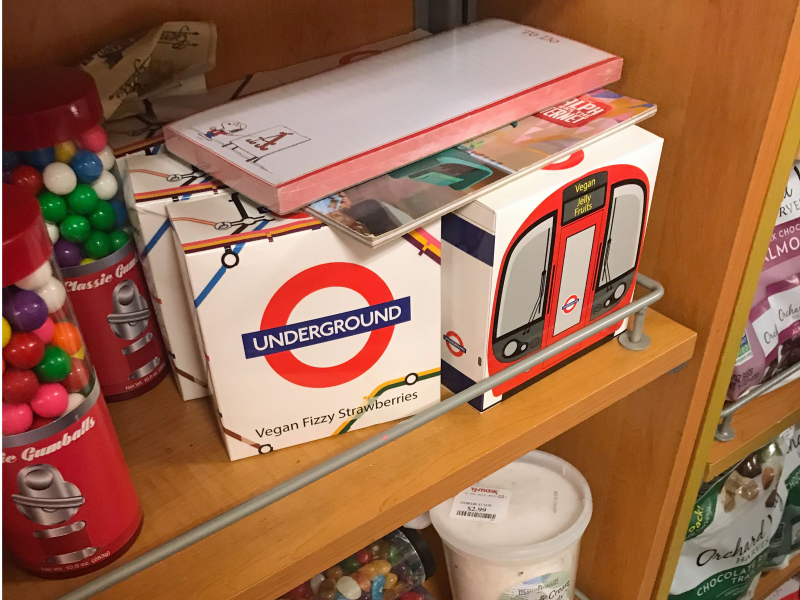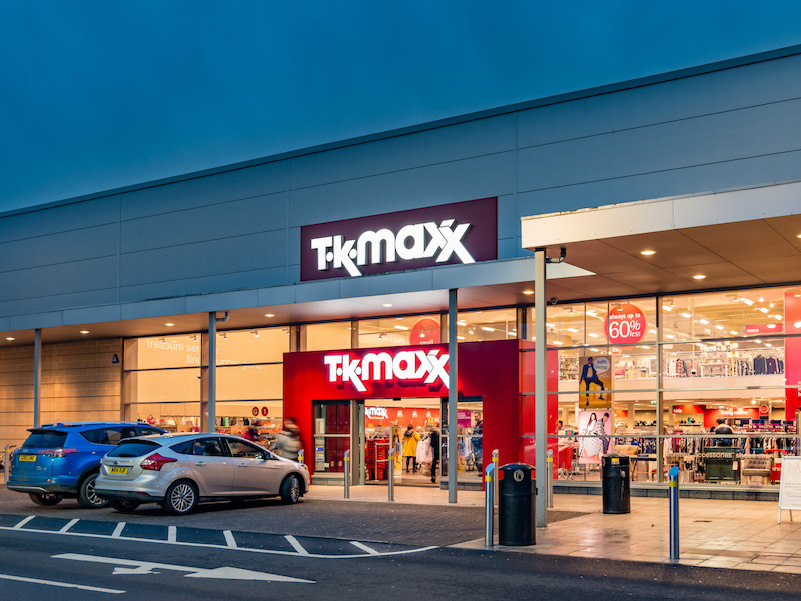- TJX Companies – the parent company of both TJ Maxx in the US and TK Maxx in the UK – reported positive sales increases across the brand portfolio in May, pointing to the strength of discounted goods.
- Though both TJ Maxx and TK Maxx are similar stores in their respective home countries, the shopping experience differs, particularly at its city locations.
- We shopped at stores in the financial districts of New York City and London and saw why TK Maxx has an edge over TJ Maxx.
- Visit Business Insider’s homepage for more stories.
As several major department stores flounder, TJX Companies – the parent company of TJ Maxx, TK Maxx, Marshalls, HomeGoods, Homesense, and Sierra Trading Post – continues to find a sweet spot in discounted goods, both in the US and abroad.
In a call with investors in May, TJX reported that comparable store sales across the portfolio rose 5% and total revenue rose by 7% to $9.3 billion in the first quarter. The growth was led primarily by the company’s core brands – TJ Maxx, TK Maxx, and Marshalls – and point to continued consumer demand for lower-priced options.
Though TK Maxx – which has 575 stores across Europe and Australia – has a similar reputation to TJ Maxx’s 1,257 stores across the US, many consumers fail to recognize the connection between the sister companies due to their different names.
When TJ Maxx opened in the UK in 1994, it changed its name to avoid confusion with the popular department store group TJ Hughes.
Read more: TJ Maxx has a different name in Europe and Australia, and there's a simple reason why
Despite a lack of shared moniker, both stores continue to boast legions of loyal shoppers and attract foot traffic that is outpacing its full-price department store peers.
"We believe this is a great indicator of the enduring appeal of our great values on an eclectic and exciting mix of merchandise and our treasure-hunt shopping experience, as well as the resiliency of our off-price retail model," TJX Companies CEO Ernie Herrman said during the earnings call in May.
While TJ Maxx and TK Maxx are, in essence, the same store, there are some pointed differences in the shopping experiences. We visited two comparable stores in the financial districts of New York City and London that both target a demographic of busy urban professionals.
Ultimately, TK Maxx's organized store layout and displays, paired with its stronger product assortment, came out on top:
When we entered the TK Maxx we were greeted by a large neon sign advertising the two biggest perks about shopping there: it's cheap, and there's a constant turnover of clothing.

It is instantly apparent that TK Maxx stores in the UK share the same fairly chaotic layout as their US equivalents.
Clothing is grouped by the garment type - dress, t-shirt, and trousers, for example - and size. This means that lots of different brands are jumbled together, and you might only find one piece in particular sizes and styles, which is why it's known as a treasure-hunt shopping experience.
At the front of the store is a small area marked as "Gold Label." These are TK Maxx's premium and pricier brands. In the US, this is comparable to TJ Maxx's "The Runway" section.
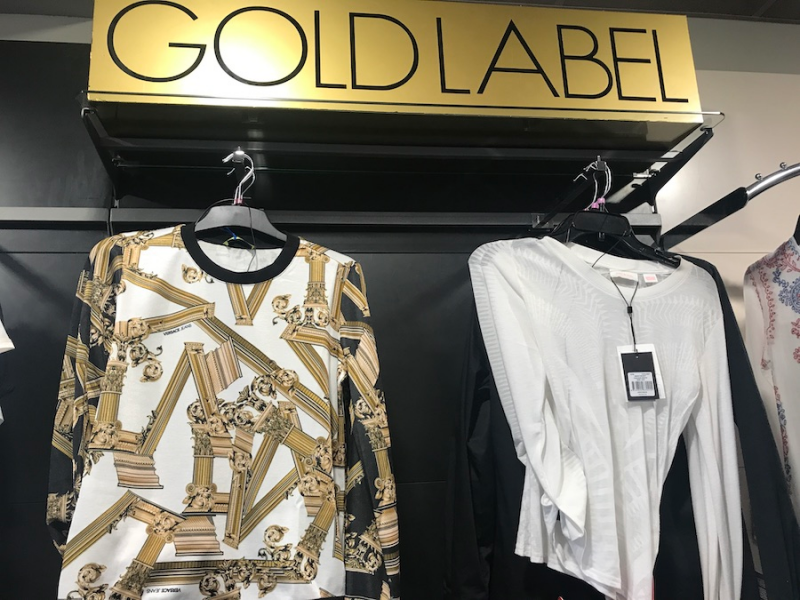
We instantly spotted a garish Versace t-shirt here.
The other side of the entrance was a large makeup, beauty, and skincare section.

It's likely that TK Maxx puts smaller items that are easier to shop at the front of the store to lure in customers.

TK Maxx sources its inventory from several different places, including designer brands and up-and-coming labels.
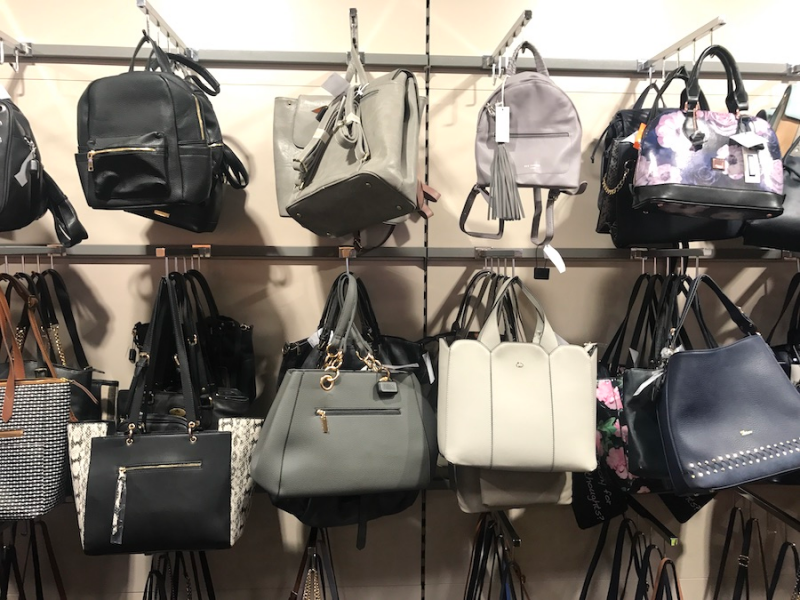
We spotted some local brands in the handbag department.
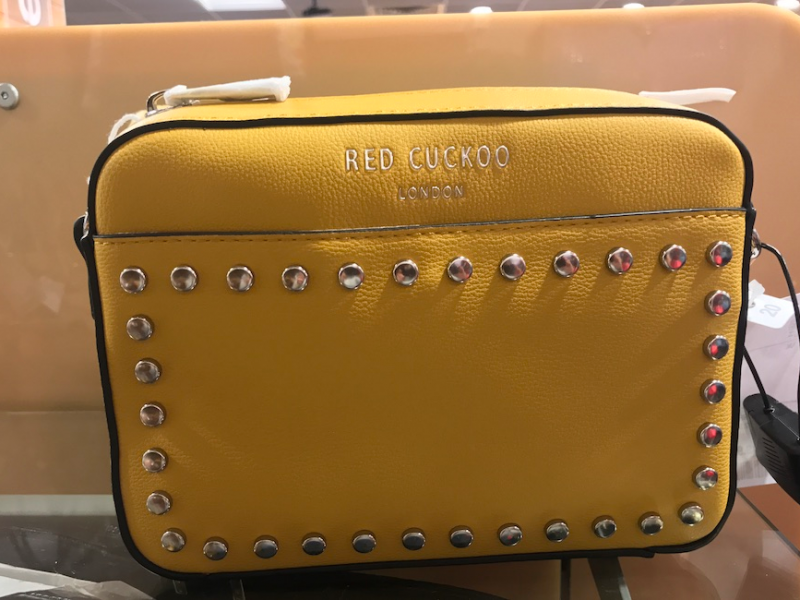
Some products are manufactured exclusively for these stores. These items are generally cheaper to source, so TK Maxx is able to offer bigger discounts to its customers.

Source: Business Insider
Analysts say that off-price stores have been successful in the age of online shopping because they offer a treasure-hunt shopping experience that's hard to replicate online.
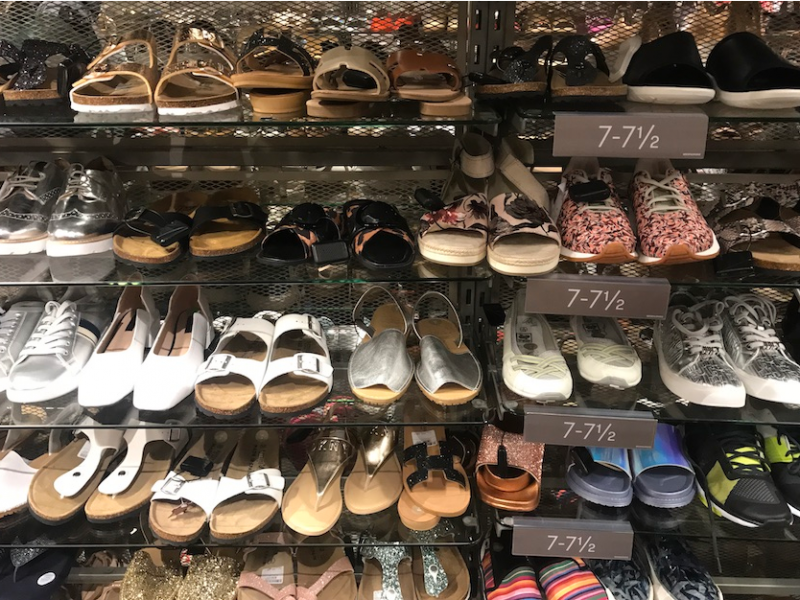
This is highly visible in the shoe department.
Customers are offered carts so they can load up with cheap clothing.
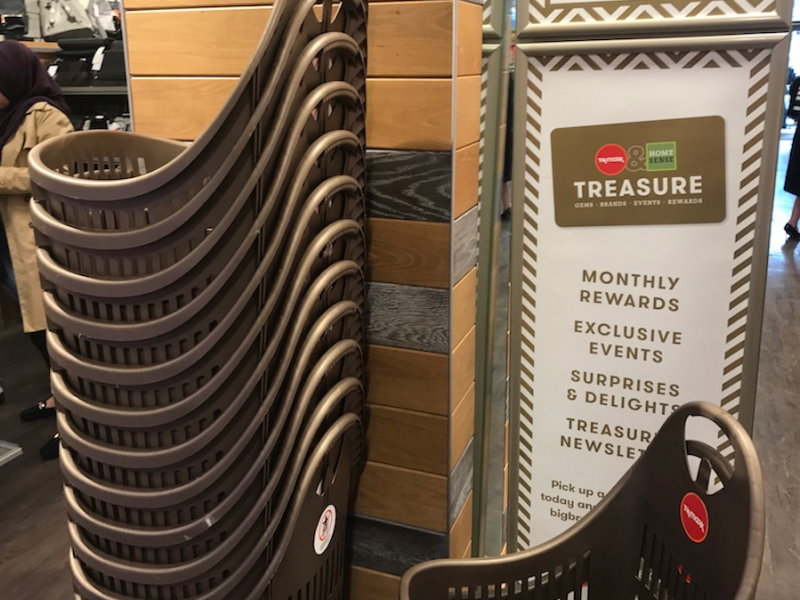
We spotted dozens of Ralph Lauren and Calvin Klein products around the store.

These companies have said that they are looking to scale back from the off-price channel to improve their brand image, but there was still a ton in this store.

Downstairs, there were rows and rows of clothing in a "Mod Box" section. TK Maxx describes this section as having its "most on-trend pieces." A quick rummage through revealed these were its low-cost — and possibly lower quality — fast-fashion items.
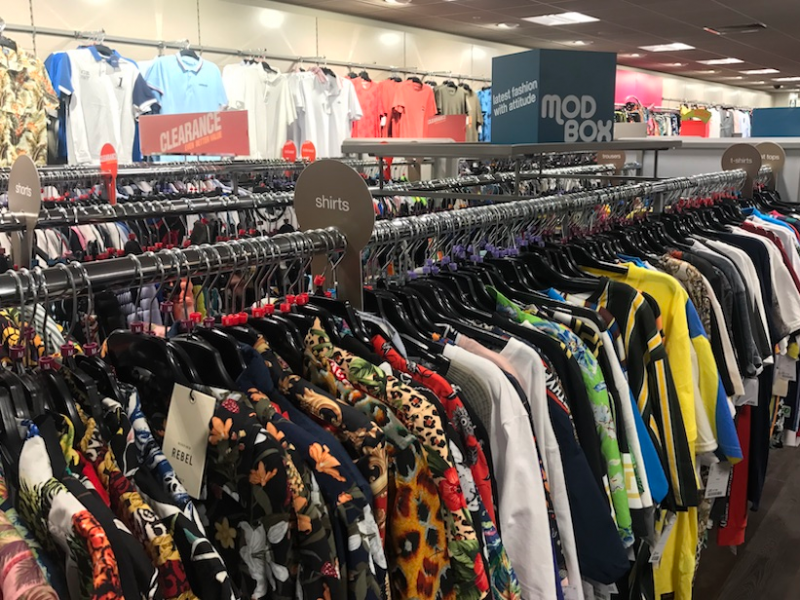
There's no real difference in the shopping experience at TK Maxx over TJ Maxx, aside from the fact that you're more likely to be shopping from brands that are better known to each region.

Despite this, there were still lots of well-known US brands available.

As we headed to the cashier, we came across TK Maxx's small food section. Similar to TJ Maxx, this mostly consisted of non-perishable items.
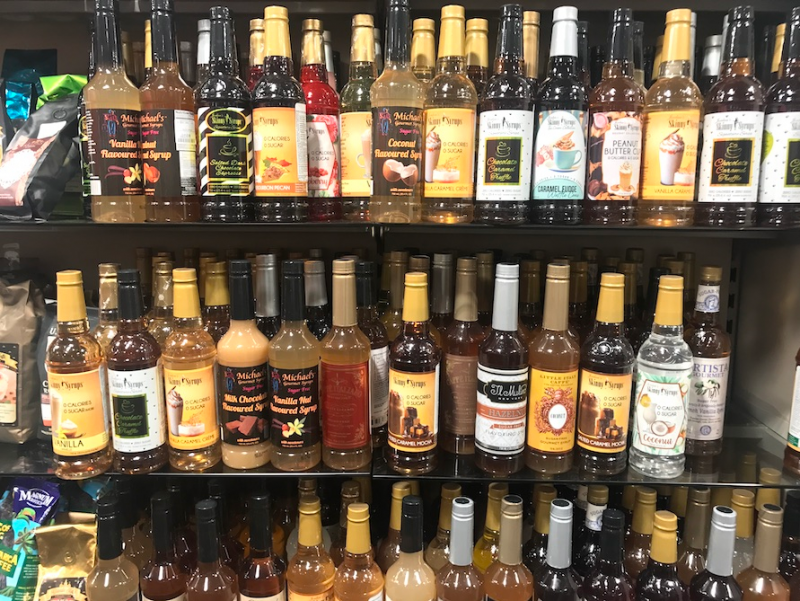
Next, we visited a TJ Maxx store in Manhattan's financial district. The store is located in the basement level of a building that was formerly home to the Bankers Trust Company.
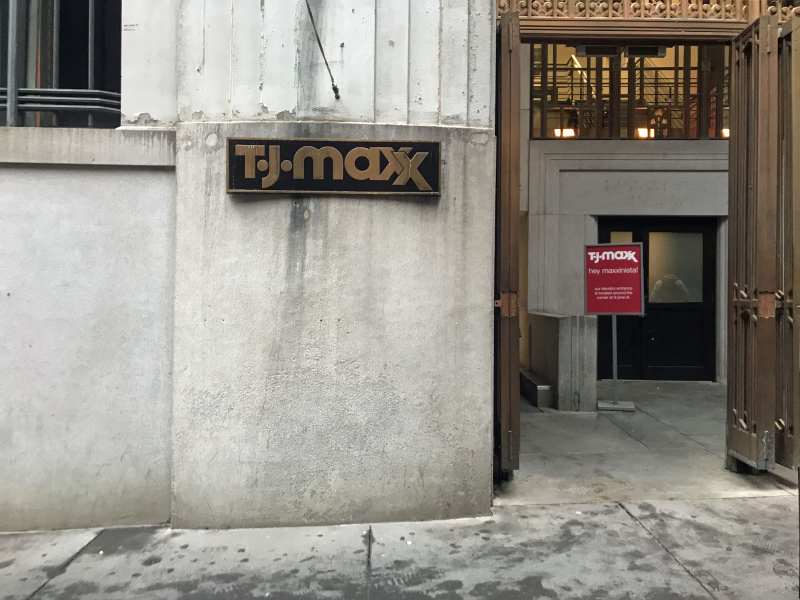
Once we descended into the depths of the building, we immediately saw signs to join the TJX rewards credit card.

Like the London store, TJ Maxx also had a large assortment of makeup, beauty, and bath products. This was possibly the most organized section of the store.

The store had an impressive number of designer handbags, all wired with intense security to protect against shoplifting.

Like the London store, TJ Maxx featured a wide array of low-priced clothing.
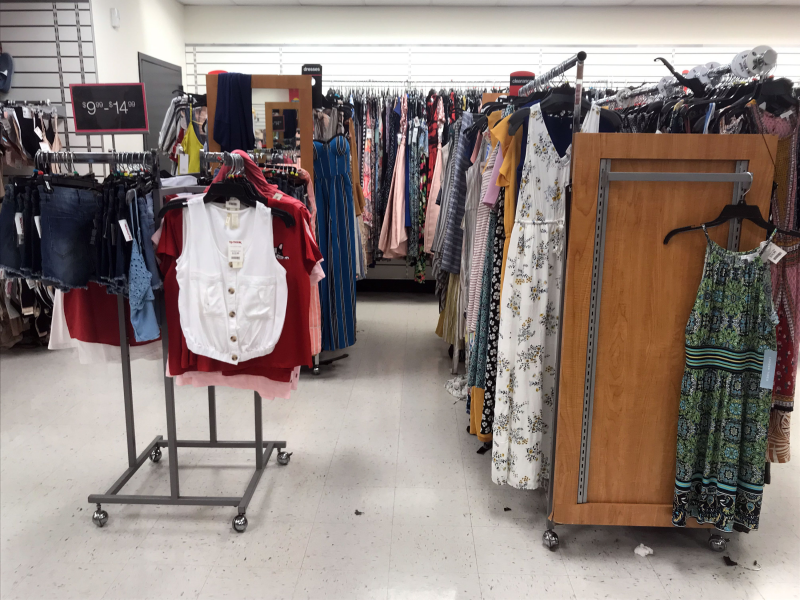
However, the US store was comparatively in a state of disarray, with tons of messy racks.
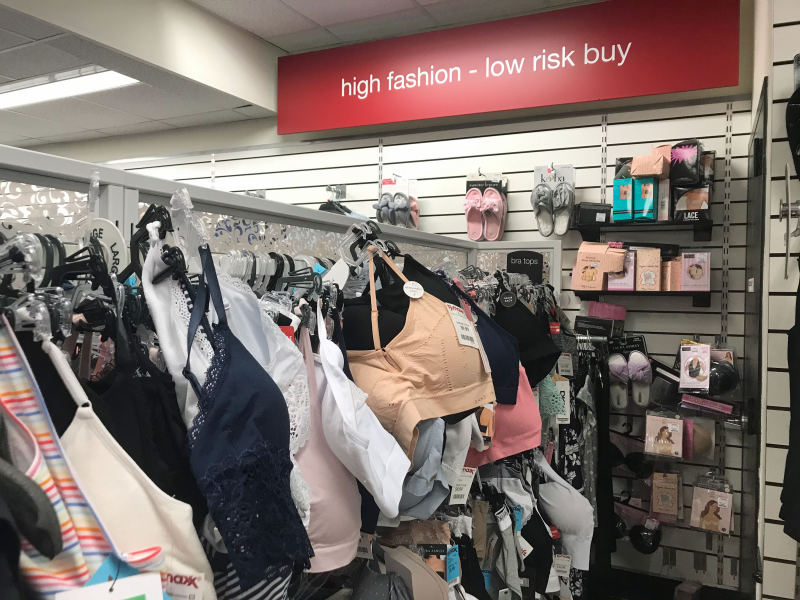
As we continued into the store, we found the higher-end "The Runway" sections, dedicated to more expensive labels. (However, it appears this T-shirt on the right was misplaced.)
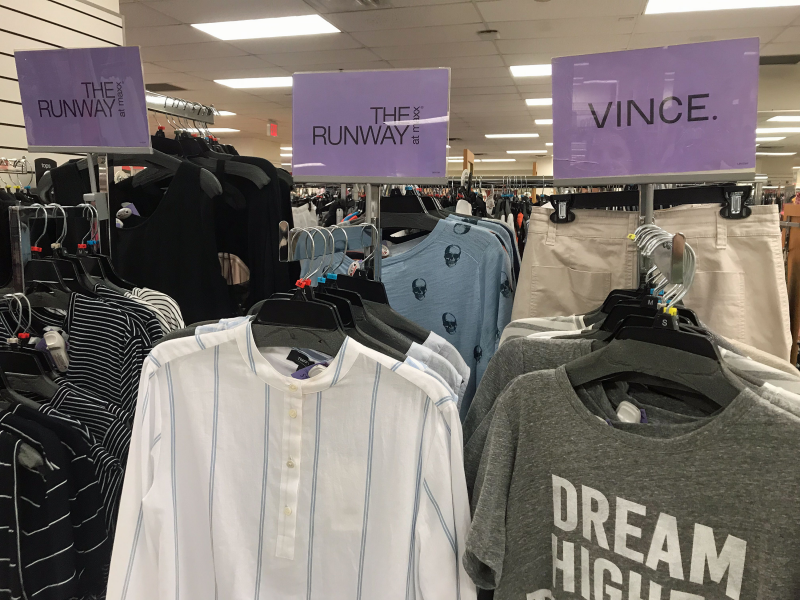
In women's Runway section, we found items like this Theory jacket, offered at a significant discount.

We also found Runway racks in the men's section, which also featured brands like Theory.
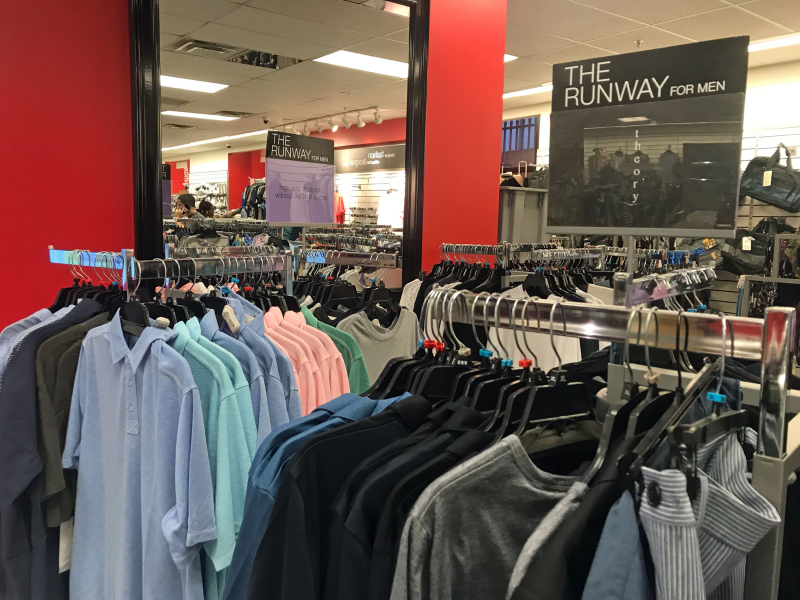
Next, we visited the shoe section. While the rows were fairly tidy and orderly ...

The sale table left much to be desired. Still, it didn't stop groups of shoppers from sifting through the pile like it was a luxury sample sale.
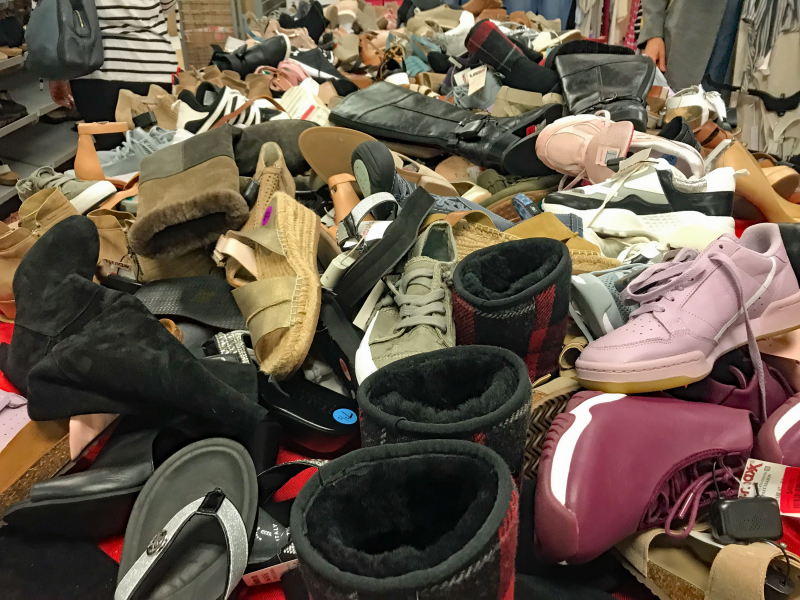
The store was crammed with disheveled products. On a table in between the men's and women's section we found a Ford drill driver on top of a Bud Light cooler and speaker.

Downstairs, we found the home goods area, jam-packed with items in no discernible order. It was somewhat overwhelming.

Here we also found one of multiple food sections (there was also one upstairs near the register, perfect for impulse buys).
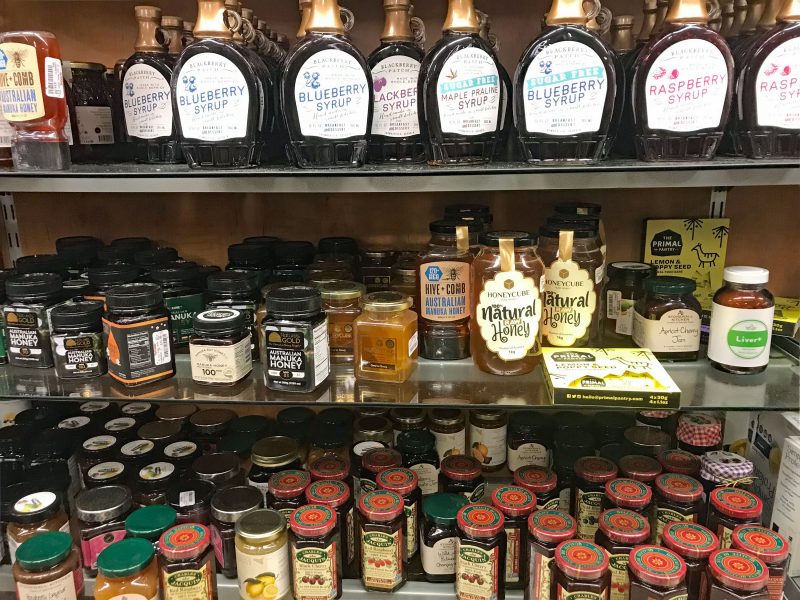
It included name-brand products, like these Starbucks Keurig pods.

This section had everything, from pet toys and food ...

...to affordable luggage and travel items.
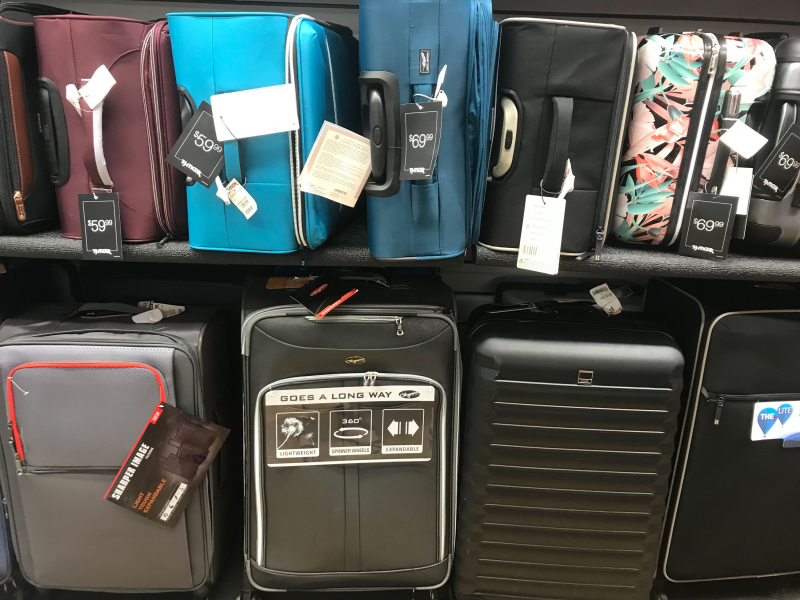
Despite the store's chaotic, disorganized nature, the store was still packed and had a lengthy line for checkout at around 4:30 p.m. on a Wednesday.
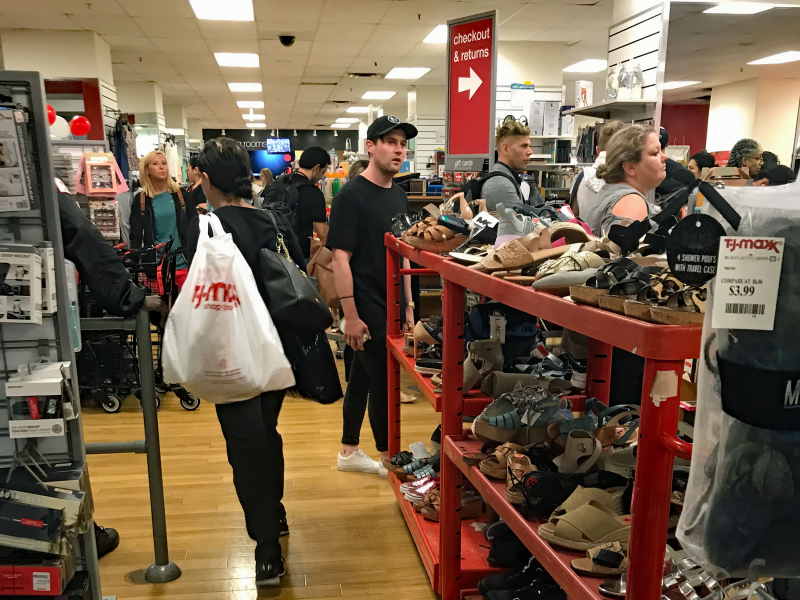
Still, we preferred the orderly nature of the London store. Here is some UK-themed candy we found by the register in New York City.
